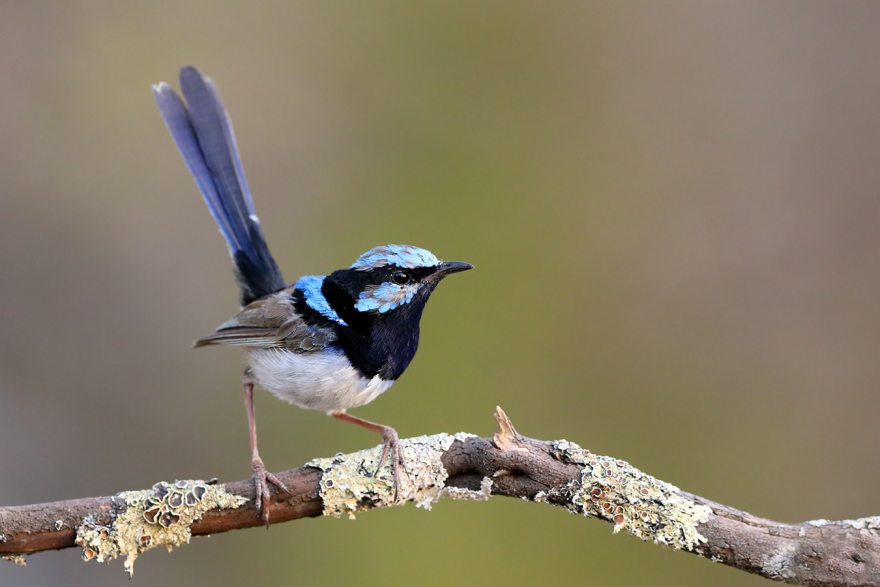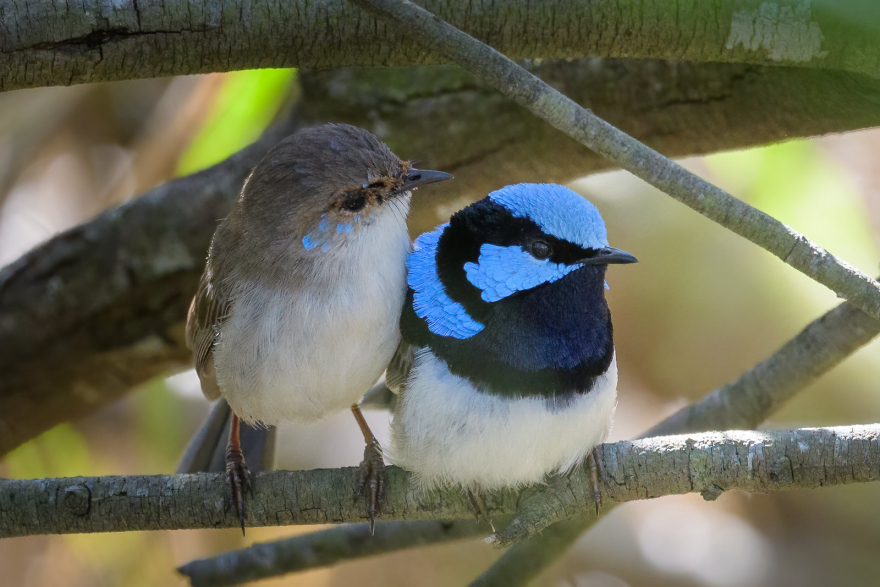There’s a natural progression that many finch keepers follow: First, they start with the hardy “seed and water” species such as Zebra finches and Emblemas. These are followed by slightly more up-market birds like Gouldians and Star Finches. Eventually, their aviary becomes home to semi-insectivorous species like cordons and siskins.
This journey eventually brings the finch keeper to the holy grail of mixed aviary species—softbills. A softbill is any species of bird that feeds exclusively on “soft” foods such as live insects or invertebrates. For softbills, it’s not enough to occasionally fill up a seed hopper, as many expect to be fed live food several times a day.

Due to their complex feeding requirements, all softbills are challenging to keep in captivity. Superb Fairy-wrens are no exception, but are considered by many to be a good starting point for an aviculturalist looking to make a first foray into softbill husbandry.
The superb fairy-wren is an iconic Australian species, found in woodlands and backyards from Brisbane all the way down to Hobart, and as far west as South Australia’s Eyre Peninsula.
Most—if not all—Australian states will require you to have a permit to keep superb fairy-wrens, however the process of obtaining one is generally straightforward and inexpensive.
Housing Superb Fairy-wrens
Wild wrens spend most of their time either sheltering in thick brush, or pecking through leaf litter in search of insects. An aviary housing these birds must accommodate these natural behaviours through careful planting of the space with grasses and shrubs.
The aviary should be at least 4 metres long and two metres wide, but obviously bigger is always better—especially if you intend to house other birds in the same aviary.
Superb fairy-wren males are quite territorial, so two males should never be housed in the same aviary. Male offspring should be separated from their father (and sometimes each other) as soon as they begin to mature into their blue plumage.
They can share an aviary with most finch species, but avoid any particularly assertive or aggressive species. Even the most aggressive finch poses minimal threat to the superb fairy-wrens, however they’re liable to be injured or killed should they choose to pick a fight.
Conventional wisdom says that superb fairy-wrens shouldn’t be housed with other blue finches, as the colour may incite the territorial male into attacking. Cordon bleu finches are often cited as a species that can’t be housed with superb fairy-wrens, though a number of breeders do so successfully, albeit in very large aviaries.
The Softbill Diet
Live insects are the foundation of most softbill diets. Mealworms, maggots, flies, moths, and crickets can all be purchased, produced or captured via various means.
Hard boiled eggs, or plain cake made with a significant number of eggs, can also be offered as an alternative protein source. When eggs are used a substitute for live insects, a commercial soft food such as Wombaroo Insectivore Rearing Mix or Vetafarm Insecta Pro should be added to pump up the protein levels.
Most softbills—including the superb fairy-wren—also appreciate some greens and seeds in their diet. Fresh green seed heads, and seed-filled or “seed-adjacent” vegetables such as corn and cucumber are generally consumed and appreciated.

Breeding Superb Fairy-wrens
The first challenge of breeding superb fairy-wrens is introducing a male and a female to one another. It’s common for a newly introduced bird to be attacked by the existing resident of an aviary.
The introduction strategy generally used involves placing the male and the female into separate cages that allow them to see and hear each other, but does not allow physical contact. After a week or two—or once signs of aggression have abated—they can be introduced into the aviary together at the same time.
They’ll need to be watched carefully for the first few days and caught up again if any signs of aggression emerge. Sometimes releasing the pair peacefully can take a couple of attempts. Occasionally, two birds simply don’t get along and an alternative partner will need to be sourced.
Once you’ve got a compatible pair, getting them to breed is relatively straightforward. Give them privacy and an excellent supply of live food and eventually the male will moult into his breeding plumage, the female will construct a nest, and together they’ll raise some chicks.
Final Thoughts
Once you’ve perfected the care of the “intro level” softbills, there’s a whole world on amazing birds available to you. Wren, robins, chats, and even bee-eaters can be kept by aviculturalists of sufficient skill and dedication.